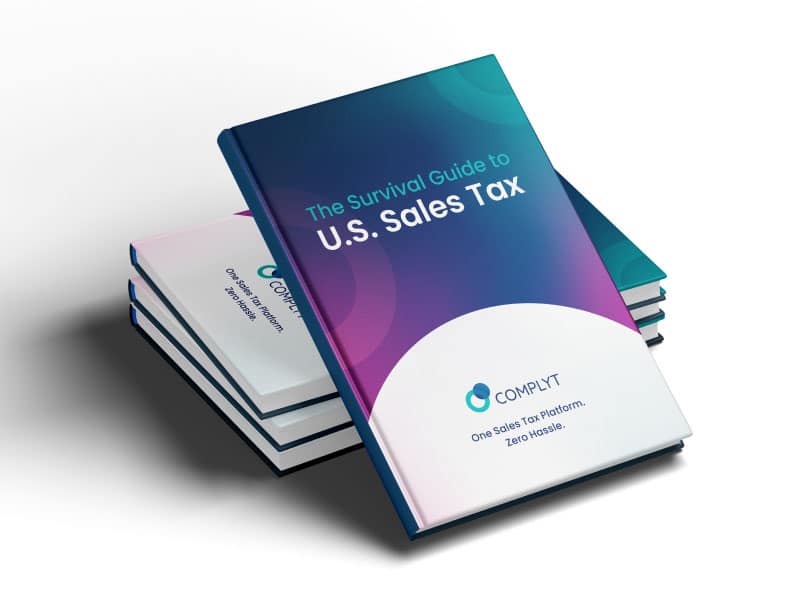What is the sales tax rate in New Mexico?
New Mexico’s state sales tax is known as Gross Receipts Tax (GRT) and is charged on businesses rather than consumers. It applies to the total amount of money a business receives from goods sold and services performed.
The tax rate varies by location, as local jurisdictions (cities and counties) are allowed to impose additional rates. As of 2023, the state rate is 5.125%, but with local taxes, it can be as high as 8.8125%. It’s essential to know the correct GRT rate for your business location and any additional jurisdictions where you operate.
Sales Tax New Mexico: When should your business collect Sales Tax in New Mexico?
In New Mexico, a business is required to collect and remit GRT if it has a tax presence or nexus in the state. This could be a physical presence, such as an office or store, or an economic nexus based on sales revenue, transaction volume, or other criteria. If your business meets these requirements, you must collect GRT on your sales and services in New Mexico.
New Mexico Physical Sales Tax Nexus
Here’s a brief Sales Tax Physical Nexus checklist that can help businesses ascertain whether they may have triggered a nexus in New Mexico:
- Business Location: A physical presence in the state, including offices, warehouses, or stores.
- Employees: Having employees working in New Mexico.
- Property: Owning or leasing property in the state.
- Affiliates: In-state affiliates that refer customers to your business for a commission.
- Events or Shows: Participating in trade shows or events in New Mexico.
If your business meets any of these criteria, you likely have a physical nexus and are required to collect and remit GRT.
New Mexico Economic Nexus Threshold: Revenue, Thresholds, and Transactions
New Mexico’s economic nexus laws require out-of-state sellers to collect and remit GRT if they exceed a certain threshold of sales revenue or transaction volume. The threshold, as of 2023, is $100,000 in gross receipts from sales in the state. This applies to both tangible goods and services.
Which services are taxable in New Mexico?
In New Mexico, GRT applies to both tangible goods and services. Taxable services include:
- Professional services (e.g., legal, medical, architectural)
- Repair services
- Real estate services
- Leasing of property
- Telecommunications services
- Advertising
This list is not exhaustive, and it’s essential to check with the New Mexico Taxation and Revenue Department for the most up-to-date information on taxable services.
New Mexico Sales Tax on Products: How to Calculate What Your Business Should be Charging
Calculating GRT in New Mexico involves adding the state rate (5.125%) to any local rates where your business operates. The combined rate is then applied to the total gross receipts from your sales and services.
For example, if your business is in a location with a total GRT rate of 7.5%, you would charge $7.50 in tax for every $100 in gross receipts.
Make sure to regularly check the New Mexico Taxation and Revenue Department’s website for any rate changes.
How much is the New Mexico clothing tax?
In New Mexico, clothing is subject to the same Gross Receipts Tax (GRT) as other goods and services. The tax rate depends on the location of your business, as local jurisdictions can impose additional taxes on top of the state rate of 5.125%. As a result, the GRT rate on clothing can vary widely across New Mexico, ranging from 5.125% to as high as 8.8125%.
Do New Mexico sales tax holidays affect New Mexico clothing tax?
As of 2023, New Mexico participates in an annual sales tax holiday, known as the “Back-to-School Sales Tax Holiday,” which usually takes place in early August. During this event, certain items, including clothing and footwear priced at less than $100 per item, are exempt from GRT.
This means that businesses selling qualifying items during the tax holiday do not need to collect GRT on those sales. Keep in mind that there are specific guidelines for what qualifies as exempt clothing and footwear, so it’s essential to review the rules provided by the New Mexico Taxation and Revenue Department.
New Mexico Online Sales Tax: Are SaaS and Digital Services Taxable?
Because GRT is applied to the entirety of a business’s revenue, digital services, including Software as a Service (SaaS) and electronically downloaded software, are subject to tax in New Mexico. This means that if your business provides digital services to customers in New Mexico, you must collect and remit GRT on those sales.
SaaS Sales Tax New Mexico: Does my Business Need to Charge Sales Tax for SaaS in New Mexico?
If your business sells SaaS to customers in New Mexico and meets the state’s nexus requirements, you’re obliged to collect and remit GRT on those sales. New Mexico defines both SaaS and cloud computing as services, making them subject to the GRT compliance requirements.
So even though it may not be called New Mexico SaaS sales tax, the result is much the same when businesses pass the tax on to their customers.
How can a business get a sales tax permit in New Mexico?
To collect and remit GRT in New Mexico, businesses must first register with the New Mexico Taxation and Revenue Department. You can do this online through the department’s Taxpayer Access Point (TAP) system. Once registered, you’ll receive a Combined Reporting System (CRS) identification number, which you’ll use to file your GRT returns and make payments.
New Mexico Tax Return Due Dates Explained
GRT returns in New Mexico are generally due on the 25th of the month following the reporting period. However, the frequency of your filings will depend on your business’s gross receipts. Most businesses file monthly, but those with lower gross receipts may be eligible for quarterly or annual filing.
What is the required frequency for sales tax returns in New Mexico?
The frequency of GRT returns in New Mexico depends on your business’s gross receipts:
- Monthly filers: Gross receipts over $60,000 per year
- Quarterly filers: Gross receipts between $30,000 and $60,000 per year
- Annual filers: Gross receipts less than $30,000 per year
Check with the New Mexico Taxation and Revenue Department to determine your filing frequency.

